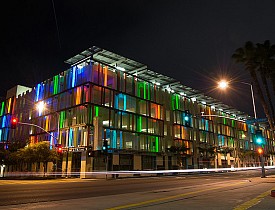What Do the Various LEED Certifications Mean?
 LEED certification is hot — lots of people want it, but do they even know what it means? Get the facts.
LEED certification is hot — lots of people want it, but do they even know what it means? Get the facts.
LEED accreditation
The United States Green Building Council (USGBC) developed the Leadership in Energy and Environmental Design (LEED) rating system to certify buildings as meeting a specific set of standards for green building. They also provide accreditation to individuals, known as LEED Accredited Professionals (AP), who have demonstrated knowledge of green building and their rating systems. Sometimes contractors say they are LEED “certified”, but they aren’t; they’re accredited (although they may be certifiable!). Only buildings can be certified, people are accredited.
What type of building can be certified?
Almost any building that people live in can be certified under LEED for Homes. This includes single-family homes, multifamily buildings up to six stories, senior living facilities, dormitories, and even fraternity and sorority houses. For example, Harvard University built a LEED Gold-certified graduate housing building which features sustainable design and siting, as well as details like bamboo flooring. Boston and Cambridge, MA are leading the way with LEED certified university buildings. Harvard has 50 LEED certified buildings. Massachusetts Institute of Technology and Boston University have also completed LEED certified building projects.
Role of a green rater
Most LEED certifications are limited to new buildings, although some major renovations can be certified if the scope of the work is big enough. For a building to be certified under LEED for Homes, the project team needs to hire a Green Rater, an individual approved by the USGBC to manage the certification process. The Green Rater advises the team throughout the process, inspects the building before drywall is installed and again at completion to make sure it meets all the requirements, collects all the required documentation and delivers it to the USGBC for certification. Accredited LEED AP Homes professionals sometimes work on these projects, but only Green Raters are approved to do the certification work.
Levels of certification
LEED for Homes certification requires that a project fulfills certain requirements or prerequisites, plus meets enough other credits that provide points to achieve a minimum certification level. The level of certification depends on the project's total number of points:
- Certified (the lowest)
- Silver
- Gold
- Platinum (the top)
How a building earns LEED points
The amount of points needed to meet each certification level varies based on house size and number of bedrooms. The smaller a house and the more bedrooms it has, the fewer points it needs for certification – this is designed to encourage construction of smaller, more efficient homes. The prerequisites and credits are divided into 8 categories:
- Innovation and Design (ID)
- Location and Linkages (LL)
- Sustainable Sites (SS)
- Water Efficiency (WE)
- Energy and Atmosphere (EA)
- Materials and Resources (MR)
- Indoor Environmental Quality (EQ)
- Awareness and Education (AE)
Each project’s score is tracked on a very complicated Excel spreadsheet and credits are justified with specific documentation provided by the project team for each item.
Carl Seville writes for networx.com.
Updated May 10, 2018.
Looking for a Pro? Call us (866) 441-6648

Remodeling Average Costs
Remodeling Contractors Experiences

Landscaping Turns A Weed Patch Into A Great Little Zen Garden

Yard Cleanup And Lawn Care Service With A Great Work Ethic



